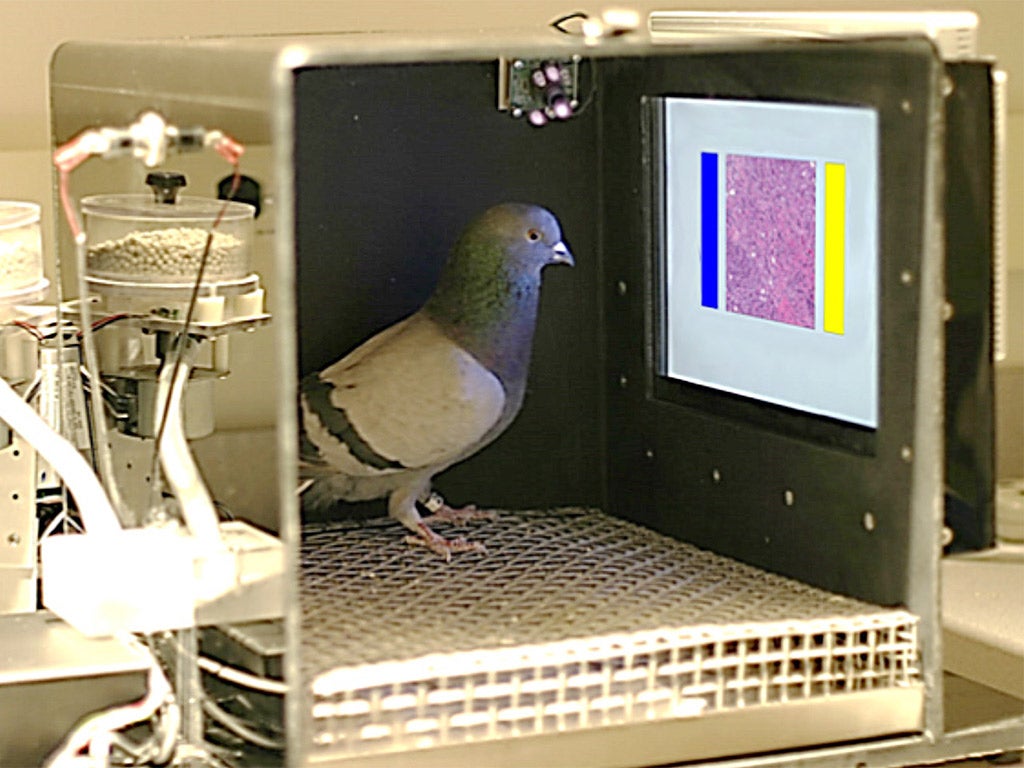Breast cancer: Pigeons as good as humans at spotting signs in biopsy samples and mammogram scans, says new research
New research suggests the birds could be given a role in the development of new diagnostic procedures

Your support helps us to tell the story
From reproductive rights to climate change to Big Tech, The Independent is on the ground when the story is developing. Whether it's investigating the financials of Elon Musk's pro-Trump PAC or producing our latest documentary, 'The A Word', which shines a light on the American women fighting for reproductive rights, we know how important it is to parse out the facts from the messaging.
At such a critical moment in US history, we need reporters on the ground. Your donation allows us to keep sending journalists to speak to both sides of the story.
The Independent is trusted by Americans across the entire political spectrum. And unlike many other quality news outlets, we choose not to lock Americans out of our reporting and analysis with paywalls. We believe quality journalism should be available to everyone, paid for by those who can afford it.
Your support makes all the difference.Pigeons are as good as humans at spotting signs of breast cancer in biopsy samples and mammogram scans, according to remarkable new research.
Even doctors with years of education and training sometimes struggle to interpret microscopic slides and mammograms, experts said, seriously suggesting the birds could be given a role in the development of new diagnostic procedures.
In a new experiment, the birds – which can distinguish between human faces and expressions, letters of the alphabet, and even paintings by different artists – were taught how to recognise microscope slides and mammogram scan images showing evidence of benign or malignant tissue.
A total of eight pigeons took part in the experiment, with findings published in the online journal Public Library of Science ONE.
Using food rewards, birds were trained to peck a blue or yellow “report button” depending on whether they were being shown a benign or malignant image.
“Pigeons’ accuracy from day one of training at low magnification increased from 50 per cent correct to nearly 85 per cent correct at days 13 to 15,” said lead researcher Professor Richard Levenson, from the University of California
They were also as good as human radiologists at detecting microscopic calcification spots on mammograms that can be an early sign of cancer.
“This is a difficult, time-consuming, and expensive process that requires the recruitment of clinicians as subjects for these relatively mundane tasks,” said Professor Levenson. “Pigeons’ sensitivity to diagnostically salient features in medical images suggest that they can provide reliable feedback on many variables at play in the production, manipulation, and viewing of these diagnostically crucial tools.”
Join our commenting forum
Join thought-provoking conversations, follow other Independent readers and see their replies
Comments